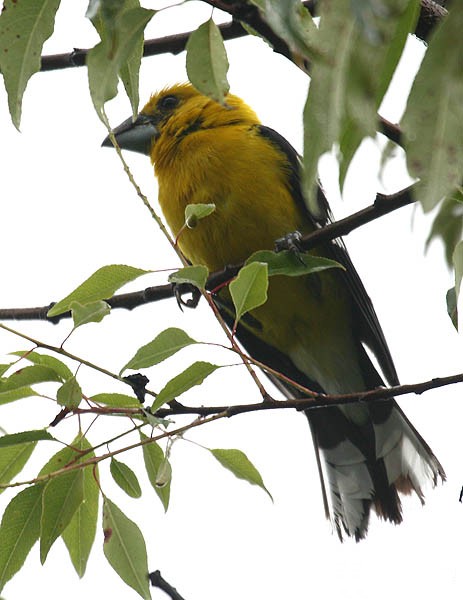Golden Grosbeak
A species of Typical New World Grosbeaks, Also known as Southern Yellow Grosbeak Scientific name : Pheucticus chrysogaster Genus : Typical New World Grosbeaks
Golden Grosbeak, A species of Typical New World Grosbeaks
Also known as:
Southern Yellow Grosbeak
Botanical name: Pheucticus chrysogaster
Genus: Typical New World Grosbeaks
Content
Description General Info
 Photo By Michael Woodruff , used under CC-BY-SA-2.0 /Cropped and compressed from original
Photo By Michael Woodruff , used under CC-BY-SA-2.0 /Cropped and compressed from original Description
The body averages 21 cm (8.3 in) in length. The bill is large and conical in shape, typical of most species in the family. The golden grosbeak is sexually dimorphic in plumage. Males are bright yellow with a black wing and back. They have white spots on their median and greater wing-coverts that wear over time, and older birds appear darker. The females have brown wings and brown streaks covering the head, flanks, back and rump. The immature of this species look similar to the female in plumage and is often not distinguishable in the field. 
Size
22 cm
Nest Placement
Tree
Feeding Habits
Golden Grosbeak consumes a mixed diet of purplish berries, insects, and seeds, foraging for these from foliage. This indicates varied feeding habits and flexibility in diet.
Habitat
The habitat of golden Grosbeak primarily consists of open woodlands, forest edges, and regions with scattered trees and brushland. These birds are found in typically arid environments, although in certain areas they are also present in more humid conditions. Golden Grosbeak is common in habitats influenced by human activity, particularly in regions characterized by broader geographical diversity ranging from arid to more humid ecosystems.
Dite type
Granivorous
General Info
Feeding Habits
Bird food type
Behavior
This species is found up to 3000 meters in elevation in a large diversity of habitats, occurring in semi-open habitats, edges of the forest, and shrub. Primarily arboreal, the birds that are often found alone or in pairs. The song is described as fast caroling that is a “rich melody, liquid and full”. Each individual has a large repertoire of songs. The call is a metallic ‘pink’. 
Species Status
The IUCN considers the golden grosbeak a species of Least Concern. This classification reflects the species' large range and stable population size (<30% decline over ten years or three generations). 